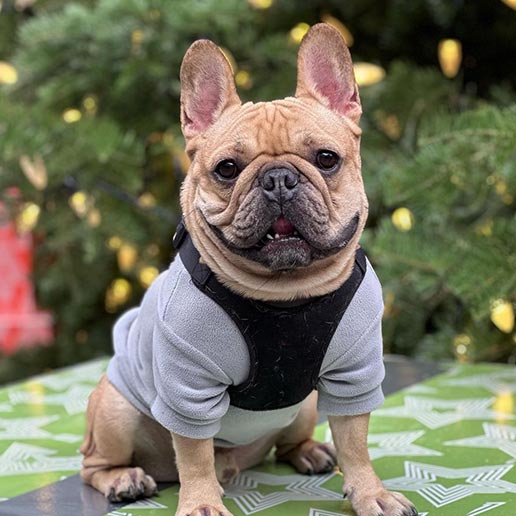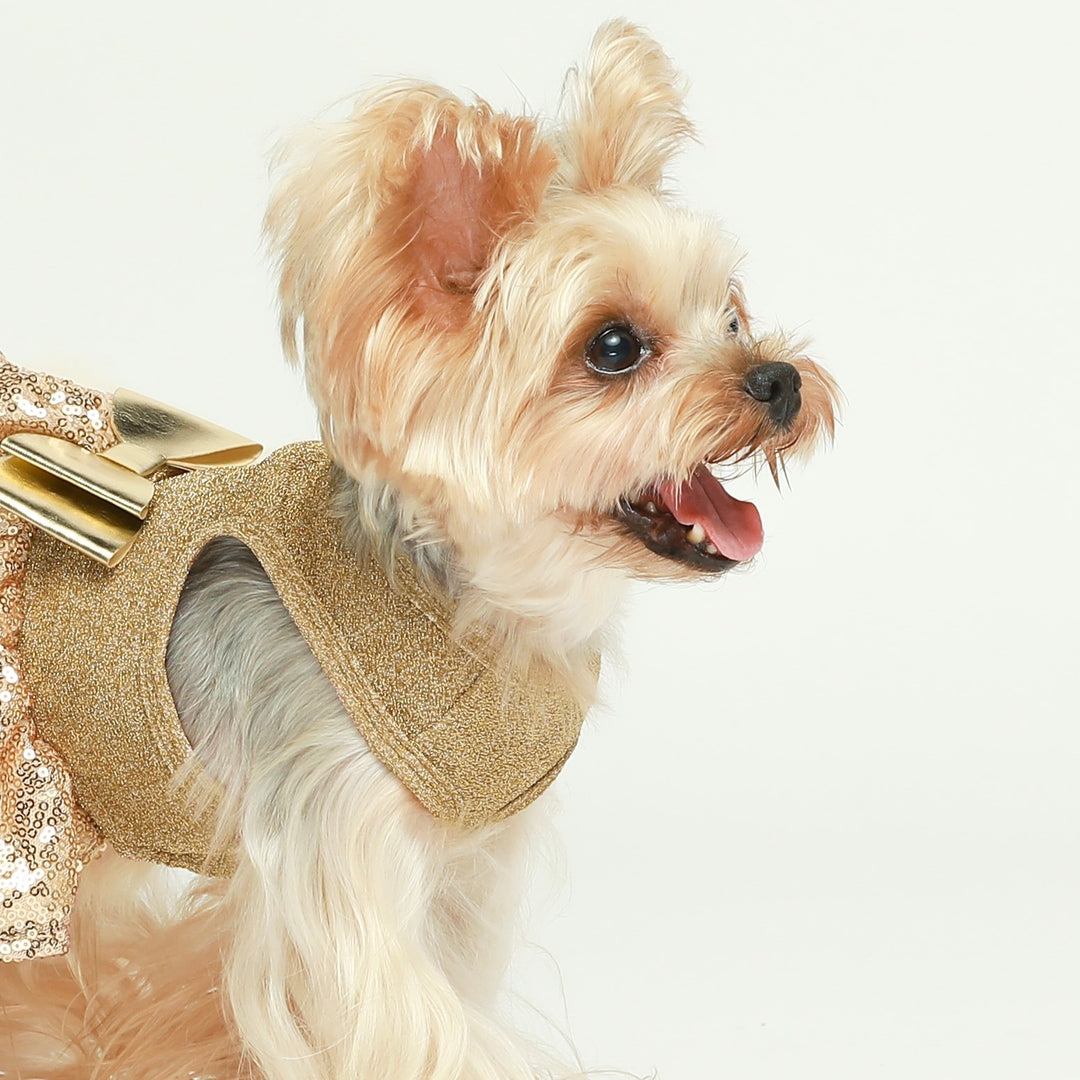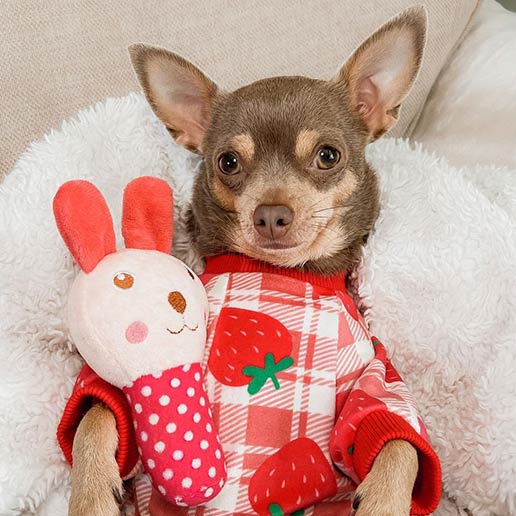How to Stop a Puppy From Chewing Everything in Sight
Got a new puppy who's treating your home like a chew toy? Don't worry, you're not the only one dealing with this! Puppies love to chew—it's just part of growing up for them. But when your shoes, furniture, and pretty much everything else are becoming puppy snacks, well, it's enough to drive anyone nuts. The good news? You can teach your furry friend better habits.
 Instagram:wakanda_shihtzu
Instagram:wakanda_shihtzuIn this detailed article, we will explain why puppies chew so much, show you how to make your home less tempting to those little teeth, and share with you some tricks for training your pup on what's OK to chew and what's not.
Why Does My Puppy Chew Everything?
- Learning About the World: Just like babies, who seem to grab and touch everything in sight to learn, puppies do the same with their mouths. They are curious about everything in the world—your shoes, the couch, and even your hands. This is how they get to know what things are.
- Making Their Gums Feel Better: Like human children, puppies lose their baby teeth and grow new ones. This can be very painful for their gums. Chewing on stuff is how they cope with it. So if you watch them go to town on a chew toy, they are not just having fun; they are actually getting some relief!

- Chewing to Stay Calm and Busy: Sometimes puppies also chew because they are stressed or because they are bored. If they are left to their own devices, or if they have nothing to amuse them, they often take to chewing on objects. This can be compared to a person fidgeting with their feet or playing with pens.
- Medical concerns: If he is chewing more than he usually would, or if the chewing starts to be more concentrated in one area, it may be time to check with your vet. Dental problems or other issues can also be the culprit for some unusual chewing behaviors.
When your puppy chews on stuff, they're not just being playful—they're dealing with growing pains and keeping busy, just like a kid with a new toy. This chewing phase won't last forever, so hang tight!
Puppy-Proofing 101: Keeping Your Stuff Safe
Locating the hazards
Take a puppy's eye view of your home. Anything that falls within reach and looks interesting to a curious pup is game. Be on the lookout for electrical cords, houseplants (some can be toxic!), small objects that could be swallowed, and of course your favorite shoes.
Securing your valuables
Remember the old adage "Out of sight, out of mind"? That's your motto. Keep anything of value or potential danger to a high shelf or behind closed doors. Fit cabinets with child-proof locks if necessary. Your puppy can't chew what they can't get to!

Safe storage solutions
Get storage boxes or baskets to get things off the floor. In your closets, make sure the door remains closed and for your garments and shoes. A laundry hamper with a lid saves your life when dirty clothes may become chew toys.
Puppy-proofed zones
Set up a safe zone where your puppy can play his heart out: a playpen or a room gated off. Fill this with appropriate toys and comfortable bedding. In this way, your puppy has space to explore in safety, while the rest of your house stays chew-free.
Chew Toys: Your Puppy's New Best Friends
Just like a favorite teddy bear for a child, chew toys can be a puppy's best pals—especially when they're in the thick of teething or trying to understand their chewing instincts. It's essential to pick the right kind of toys that won't just save your household items from destruction but will also provide comfort and enjoyment for your furry friend. Let's break down how to choose the best chewtoys for your pup.

| Toy Type | Description | Size & Durability Considerations | Toy Rotation Benefits |
|---|---|---|---|
| Rubber Toys | Soft enough for teething, tough enough for play | Must be large enough to avoid choking risks, yet small enough for your pup to handle | Keeps the puppy engaged; prevents boredom |
| Rope Toys | Good for tug-of-war and solo playtime | Long enough for safe play, with tightly woven fibers for durability | Helps in dental health by flossing teeth during play |
| Puppy Teething Toys | Designed to soothe puppy gums | Should match the puppy's mouth size and bite strength | Offers variety, which is key to a stimulating play environment |
| Interactive Toys | Engage your puppy’s mind as well as their jaws | Tough materials to withstand sharp puppy teeth; correctly sized for the breed | Encourages problem-solving skills and prolongs interest in play |
With the perfect balance of size, durability, and variety, your puppy will have plenty to do other than eyeing your personal belongings as chewable treats. Swap out their toys regularly to keep their playtime fresh and exciting, and you'll pave the way for lots of fun, constructive chewing every day.
Teaching Your Pup: Chew This, Not That!
Positive reinforcement methods
Forget about scolding – positive reinforcement is the way to go! When your puppy chews on the right things, make a big deal out of it. Praise them, give them treats, maybe even a quick play session. They'll start to learn that chewing on their toys equals good things happening.
 Instagram: my.man.mochi
Instagram: my.man.mochiRedirecting behavior
Caught your pup gnawing on your favorite book? Don't panic! Calmly take it away and immediately offer a chew toy instead. When they start chewing on the toy, praise them. You're teaching them, "Not that, but this is awesome!"
Teaching the "leave it" command
"Leave it" is a super useful command for all dogs. Start by holding a treat in your closed fist. Let your puppy sniff and lick, but don't open your hand. The moment they stop trying to get it, say "Yes!" and give them a different treat. Gradually work up to leaving things on the floor that they have to ignore.
Tire Them Out: Exercise and Brain Games for Your Pup
If you're finding your new pup has turned into a chewing machine, don't fret. The trick to saving your belongings might be simpler than you think: keep that little bundle of fur busy! A pup with plenty to do is a pup that's too tuckered out to tear up your home. Here’s how you can keep your furry friend happily occupied and away from your favorite slippers.
 Instagram: buenoandfelix
Instagram: buenoandfelix| Activity Type | Description | Benefits | Tips |
|---|---|---|---|
| Daily Walks | Short, frequent walks catered to your puppy's pace | Improves fitness; regulates energy levels | Match the walk length to your pup's breed and age |
| Fetch and Retrieve | Games involving throwing a ball or toy for your puppy to bring back | Builds obedience; provides quick bursts of activity | Use soft toys to protect their developing teeth |
| Puzzle Toys | Toys that require manipulation to release treats | Enhances problem-solving skills | Start simple to avoid frustration |
| Hide-and-Seek | Hide treats or yourself and let your puppy find them | Develops their scent tracking and keeps them engaged | Keep hiding spots within easy reach for safety |
| Obedience Training | Regular sessions focusing on basic commands like sit, stay, and come | Reinforces good behavior; mentally stimulating | Reward-based training strengthens the bond |
| Tug-of-War | Controlled games where your puppy can pull and tug safely | Allows for healthy expression of instinctual behavior | Ensure it’s a game, and stop if it becomes too rough |
| Agility Exercises | Simple homemade agility courses using safe household items or outdoor play equipment | Good for coordination and confidence-building | Always supervise to ensure safety |
| Chew Toy Rotation | Rotate between different chew toys to keep interest alive | Prevents boredom; satisfies chewing urge | Only offer safe, size-appropriate toys |
| Social Playdates | Arrange meetings with other friendly puppies or dogs, ensuring all pets are vaccinated and well-socialized | Social development; expends energy | Monitor play to ensure it remains friendly and safe |
Exercise and playtime are more than just physical outlets—they're learning moments that can improve behavior and create a stronger bond between you two. So, invest time in these fun activities, watch your puppy thrive, and say goodbye to unwanted chewing.
Last Resort: Using Deterrents the Right Way
When you've tried all the toys and training, and your puppy is still treating your home like a chew park, it might be time to gently steer them away from their favorite non-toy targets. Here's how to use deterrents effectively without causing any harm or fear:
Unappetizing Sprays
There are special sprays that taste bitter to most dogs but are harmless to them and your furniture. A quick spritz on items they shouldn’t chew turns a tempting snack into a no-go. But don't rely solely on these sprays – use them as part of the learning curve. Keep showing your pup which toys are meant for chewing so they understand the do's and don'ts.
 Instagram: mischievous_westie_fergus
Instagram: mischievous_westie_fergusStartling Sounds
- Gentle Reminders: A sudden, mild noise can interrupt your puppy’s focus on forbidden items. Shaking a can of coins might just do the trick. It’s not about scaring them, just a gentle "hey, not that!" reminder.
- Pair with Praise: Always follow up with directing them to an appropriate chew toy and heap on the praise when they make the switch. It's all about teaching, not just telling off.
Timing and Tact
Consider deterrents your backup singers, not the headliners. Your first plan of attack should always be positive training and puppy-proofing your place. And one more thing - read those labels and instructions. You want to make sure you're using everything safely. The idea is to discourage the chewing without any side effects for your little pal.
Build Better Habits
- Redirect the Urge: When you catch your puppy mid-chew, take away the naughty item, calmly, and instead, hand them a chew-approved toy. It's like saying, "Not this, buddy—try this instead!"
- Stay Positive: Keep the mood upbeat. If frustrated, he will, too, which could make the chewing worse than it is at that very moment. Keep calm, and remember, this, too, shall pass—this is a phase that you will get through with both of you working at it.
 Instagram: my.man.mochi
Instagram: my.man.mochiYou've Got This: Wrapping Up Our Puppy Chewing Adventure
Dealing with a chewing puppy takes time and patience, but it's totally doable! Focus on puppy-proofing, providing the right toys, consistent training, and plenty of exercise.Also you can choose dress for your dog to release its anxiety. Keep in mind that this chewing phase is temporary. With your love and guidance, your little chomper will grow into a well-behaved adult dog. Hang in there – you're doing great!
Quick Answers to Your Puppy Chewing Questions
Q1: How long does the puppy chewing phase last?
A: The majority of puppies outgrow too much chewing by the age of 6-8 months, though this could be different for some. Just be patient and consistent with training.

Q2: Is it okay to give my puppy old shoes or socks to chew on?
A: No! This just teaches them it's all right to chew on all shoes or socks and can include your favorite ones. Stick to proper chew toys instead.
Q3: What if my puppy swallowed something they shouldn't have?
A: Observe their behavior and call your vet immediately if they exhibit any unusual reactions, vomiting, or changes in their eating and bathroom routine.














